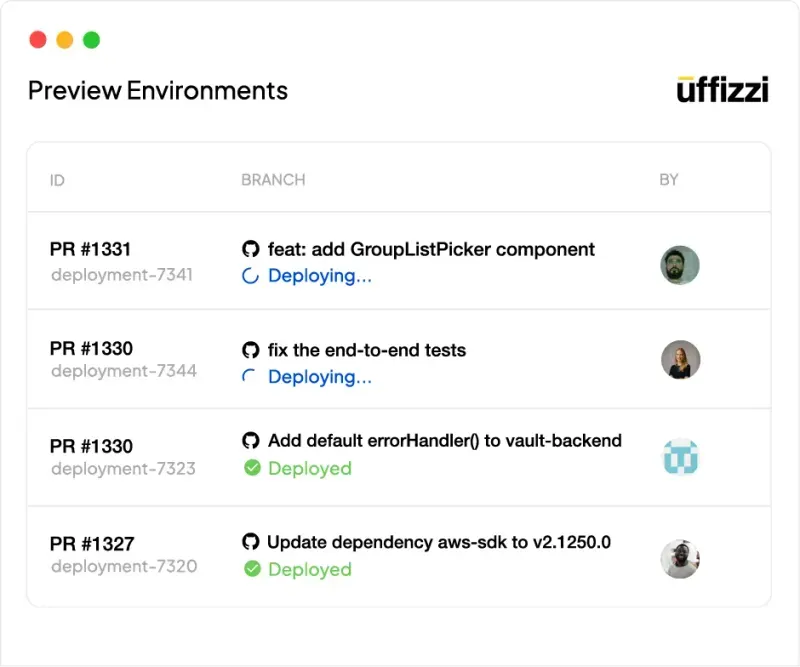In the fast-paced world of software development, efficiency and innovation are key. One concept steadily gaining traction in this sphere is “Ephemeral Environments” or “Preview Environments.” These are transient, on-demand spaces created for testing specific git branches before they are merged.
But what exactly are these ephemeral environments, and how do they contribute to the development process? Read on to learn the details of how they work and their benefits.
Table of Contents
Understanding Preview Environments
Different from persistent Staging or Production Environments that exist indefinitely, the Ephemeral Environment is simply short-lived. They come into existence when a pull request is opened and vanishes when it is merged or closed. This temporary nature serves a single purpose – to provide a dedicated space for testing and refining code changes before they’re integrated into the main codebase.
The Various Benefits They Offer Software Teams
Preview Environments offer several benefits that boost development speed and quality. They help software teams increase their development velocity by reducing the time spent testing and releasing new features.
Their ability to enable faster reviews and feedback allows developers to iterate quickly. Additionally, they promote best practices in code reviews, reducing the workload for team leaders and maintainers.
Bridging The Gap Between Local Testing & Production Environments
Preview Environments play a crucial role in software testing. They bridge the gap between local testing and Production Environments. By shifting the testing process to a “pre-merge” stage, they help identify bugs earlier, isolate responsibility, and make necessary changes before the code is merged. Preview Environments act as a quality gate, ensuring thorough testing and iteration in isolation, ultimately leading to higher-quality releases.
The Ephemeral Life Cycle
One defining characteristic of Preview Environments is their ephemeral lifecycle. They are created and deleted in response to pull request triggers. Hence, they’re often called pull request (PR) environments. When a pull request is updated, the corresponding Preview Environment reflects those changes, ensuring the testing environment stays current.
The Flexibility of Using Preview Environments
The flexibility offered by Preview Environments sets them apart from traditional testing environments. They allow teams to create as many test environments as needed, whenever needed, and for however long they’re needed. This means multiple features can be tested simultaneously without conflicts or dependencies, leading to greater efficiency and productivity.
The Rising Popularity Due To Improved Efficiency
Over the past few years, Preview Environments have grown in popularity. They complement platforms like Netlify and Vercel and are increasingly seen as invaluable tools in DevOps. With their ability to improve efficiency, promote best practices, and enhance the quality of releases, it’s clear that Ephemeral Environments are here to stay.
Embracing the Future: The Indispensable Role of Ephemeral Environments
In conclusion, Ephemeral Environment or Preview Environments are vital in software development. Their transient nature, coupled with their ability to facilitate efficient testing and rapid iteration, makes them a powerful tool in the arsenal of any software team.
As we move towards more agile and efficient development practices, the importance and use of Preview Environments are likely to continue growing. We hope this information benefited you, and we greatly appreciate you taking the time to read it.
Related posts
Sidebar
Recent Posts
The Best Forex Brokers for Beginners
Since COVID-19 first popped up, interest in the forex market has increased dramatically. Knowing how to get involved with minimal…
Maximizing Success: The Symbiosis of Dedicated Software Development Teams and Product Design Services
The Symbiosis of Dedicated Software Development Teams and Product Design Services In the rapidly evolving landscape of technology, businesses aiming…



